Craftworks 1/32 Macchi C.205 Veltro
By Chris Busbridge
The two Craftworks Macchi kits will enable you to build practically every version of these famous aircraft. Of the two, I'd favour the C202/205 kit, as the C.200 has quite a number of errors that will need considerable patience to correct. The Craftwork package is certainly impressive and gives you every confidence that a museum quality model will be the final outcome, this is because most parts are nice detailed.
I chose to model the Veltro. For me, its main visual appeal (apart from the smoke ring camouflage) are the distinctive twin barrel shaped oil-coolers. Together with the spinner and cannons, they are the only obvious differences between it and the Folgore, although there are small detail changes as well.
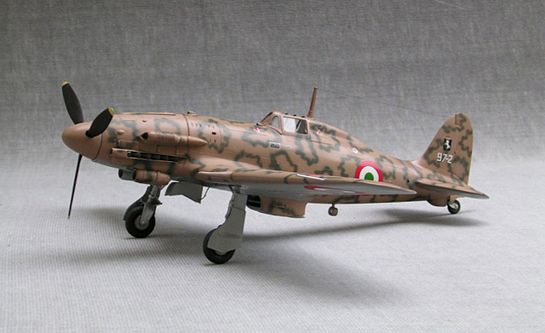
First thing was to check the accuracy of all the major parts. Using scaled-up plans from the excellent AeroDetail book (and the C.202 Ali d'Italia to back it up), the only serious problems I found concerned the spinner, canopy and tail fin. To resolve the spinner problem, I simply rounded off the Folgore version, as the Veltro part was too badly shaped to correct easily. The canopy had to be completely rebuilt, as the kit parts were found to be grossly over scale. It made me wonder if this was the reason why none of the rarely seen photos of a completed model show a closed canopy. The oversized tail fin, which was moulded as part of the fuselage, was removed, reshaped and repositioned, using a bit of Milliput to fair it back in. The rudder had very crude, exaggerated fabric detail (as did the all the other control surfaces) and even after reducing it with careful sanding, filler was still needed. Additionally, it's shape had to be altered to fit the relocated tail-fin. The horizontal stabilizers also needed slight repositioning and reprofiling, especially the leading edges, which were rather blunt. The tail-wheel well was opened up for the retractable style tail-wheel and new doors scratch-built. The bump fairing was removed and replaced with the C205 version.
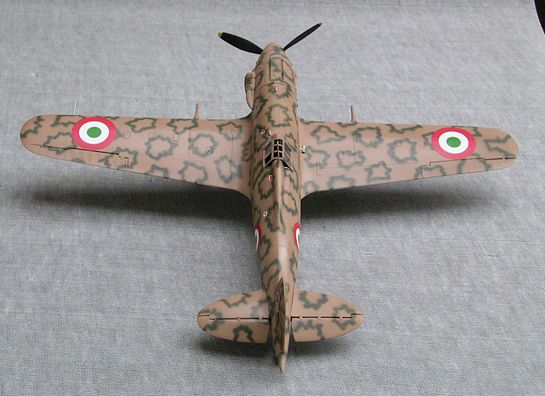
The cockpit detail is very comprehensive and even has alternative instrument panels, depending on which version you're modeling. The cockpit opening is quite small however, so some of this detail will not be easily seen.
The one-piece fuselage had strange panel lines along the length of the fuselage. I sanded them smooth and re-scribed them. The oval cross-section of the fuselage was restored around the cockpit area. The various cooling louvres, vents & scoops dotted around the nose were all over-scale and were modified. Other detail lost as a result of this work, such as access hatches etc, were re-scribed. The upper engine cowling seemed to point upwards, so it was removed, a wedge removed from the back and then re-attached. The exhaust detail moulded integrally with the lower cowling is very poor. I carefully detached and cleaned them up, to be added at a later stage. New shrouds were made from plasticard. The lower cowling was made rounder and deeper using Milliput and before it had a chance to harden off, the reshaped oil coolers were pushed into the putty in their correct position, removed and other additional detail was sculpted in before fixing them in permanently.
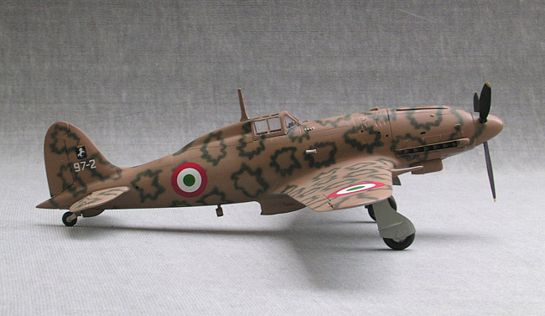
The wings had a little bit of work done on them. The wing-tips needed small adjustments to its shape and the starboard wingspan was made shorter. Other work included scribing detail for the row of inspection panels on the upper surface of each wing. White metal clearance bulges are fixed in place on the lower wing and new ejector chutes made.
The one "literal" strong point of this kit is the white metal undercarriage, which was more than capable of supporting this weighty model. The double layered brass-etch doors worked very well too. The weakest parts were the resin wheels. I flattened of the side walls a bit to give a more convincing appearance, as well enabling a better fit into the undercarriage forks.
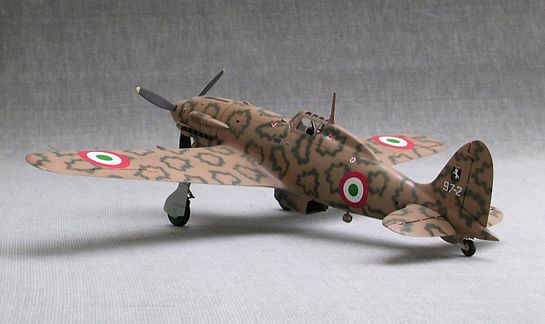
Although the rear of the engine and the veritable snake-pit of tubes, wires and engine-mounts etc. would normally have been visible in the central wheel-well area, Craftworks (probably to save costs) have modeled the wheel-well covers in-situ, even though in reality they were often discarded by the maintenance crew for being too cumbersome and difficult to use. To attempt to detail this area properly was outside of my scope and ability.
Most Veltros were camouflaged with the classic "smoke-ring" camouflage. I used Xtracolor enamels throughout, the smoke rings being applied freehand. Although there are a wide variety of decals supplied with the Craftworks kit, not many were that accurate in size or colour. In most cases I used spares to depict a Co-Belligerante aircraft of the 97 Squadriglia, 9°Gruppo, 4°Stormo Caccia Terrestre based at Termoli 1944. Although heavy weathering would be more appropriate on this model, I prefer them to be factory fresh.
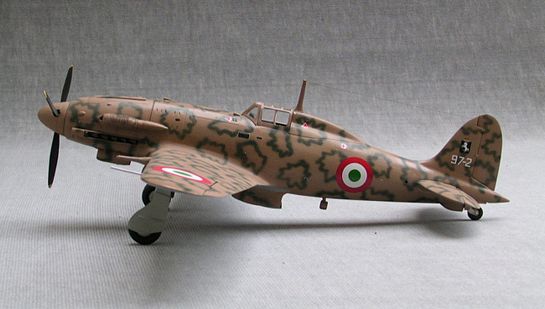
This model has been a very frustrating experience for a whole number of reasons. Because it's one of my favourite aircraft, I just had to build this Craftworks 1/32nd kit. Being aware of the quality of the Hasegawa models, it soon became apparent that this model does not come close for accuracy or ease of build. It's purchase price alone made me persevere until I got a result that I, personally, was reasonably happy with.
© Chris Busbridge 2003
This article was published on Wednesday, July 20 2011; Last modified on Saturday, May 14 2016
